Montréal natives The Arcade Fire sing in English. Yet 65 percent of the Québec city’s population have French as their first language. Les FrancoFolies de Montréal is Francophone Canada’s annual celebration of non-Anglo Saxon music. This year, big draws include French visitors Jeanne Moreau and Etienne Daho performing Jean Genet’s Le condamné à mort with musical accompaniment. Local legend Jean-Pierre Ferland is reprising his seminal 1970 set Jaune, the first Québec album to - controversially - fuse Franco sensibilities with rock dynamics. More than a festival, FrancoFolies is also cultural statement.
The remit of the festival in its 23rd year is straightforward, albeit imbued with meaning. “The idea is to celebrate the music - it’s not about genres,” explains programming director Laurent Saulnier. “It’s important for us to bring people from all the Francophone world. We have to fight to keep the language alive in North America. We are in a continent with 300 million speaking English”.
Montréal feels like a North American city, but the street signs are in French and folks say bonjour as you walk into shops. Initially, it’s slightly disconcerting – France transplanted to Canada with hints of the proximity of the Stars and Stripes. Rue Saint-Catherine, the main shopping street, has a foodery called Paris Crêpe as well as US staples like Banana Republic and Old Navy. The American burger and root beer chain A&W nestles alongside local equivalent Jiggs Friterie in a food court. Gastronomic quirks highlight the uniqueness. A specialty is viande fumée – smoked meat – a cured beef close to pastrami that’s served in rye bread sandwiches. Poutine is the local fast-food delicacy: chips smothered in curd cheese and gravy (pictured right). It looks like baby sick.
 FrancoFolies is easier to digest. Give or take a few collaborations and guest appearances, there are 165 acts playing over the festival’s 10 days. Québec’s population is just under eight million. The region has an area a smidge more than six times that of the UK. Montréal is home to 1.6 million. There’s a lot of empty space in the province. There’s a lot of music too – and a thirst for it. And if hunger calls too, FrancoFolies offers wonderful dining at outdoor terraces where côtes de Provence and assiettes de charcuterie can be ordered (pictured above).
FrancoFolies is easier to digest. Give or take a few collaborations and guest appearances, there are 165 acts playing over the festival’s 10 days. Québec’s population is just under eight million. The region has an area a smidge more than six times that of the UK. Montréal is home to 1.6 million. There’s a lot of empty space in the province. There’s a lot of music too – and a thirst for it. And if hunger calls too, FrancoFolies offers wonderful dining at outdoor terraces where côtes de Provence and assiettes de charcuterie can be ordered (pictured above).
Unfortunately, the first couple of days are marked by torrential and constant rain – I was told it was unseasonal and unexpected. It rained so hard that the Grand Prix, taking place at the same time, was cancelled for a couple of hours. By Tuesday, the sun was out and temperatures were rising. But the initial rain deterred crowds, whatever the fame of the name playing. The free outdoor shows take place on eight stages. Concerts at six indoor venues are ticketed, ranging from the small Jazz Café-ish L’Astral (sight-obscuring pillars and all) to the large seated theatre the Salle Wilfred-Pelletier. Métropolis is a longer version of Shepherds Bush Empire, while Club Soda is a half-size answer Kentish Town’s Forum.
All feels familiar, friendly and manageable. The real difficulty is deciding what to see. Limited time makes choosing a mild headache and clashes in the schedule frustrate (why is the Jean-Pierre Ferland show happening at the same time as Initials S.G. Hommage à Gainsbourg?). Whinging aside, it’s an incredible, wide-ranging bill.
The inclusivity of the French-language-only rule is demonstrated by the non-French, non-Québec artists. The Côte d’Ivoire’s Alpha Blondy are inevitable crowd-pleasers at Métropolis. Mali is here in greater numbers. Habib Koite is huge, but rain at his show at the biggest outdoor stage, Espace Ford (Ford are one of the festival’s sponsors), means his crowd is limited. He makes show anyway, but the focus on clop-hopping blues-centred guitar removes whatever idiosyncrasies his music may have had before the session players horned in. SMOD are also from Mali. More fun than Koite, they play four sets over two days at the outdoor Les Spectacles Multiculturels stage. In daylight the Manu Chao-produced trio look stranded while lined up along the front of the stage, but their affinity with hip-hop hasn’t smothered their identity. The all-ages crowd goes bonkers. SMOD and audience are all smiles.
SMOD perform live at Francofolies de Montréal 2011
The home-grown has identifiable strands: French-language country/Americana or singer-songwriter fare; indie-style rock; rap or hip-hop and models that parallel French archetypes, whether chanson or pop. Reductive, but after a few days it’s impossible not to filter FrancoFolies through some interpretive mechanism.
 Seeing Tire Le Coyote helped this process coalesce. Walking past an outdoor tent I was captured by a terrific slo-mo Neil Young-style guitar solo. Then a tremulous Neil Young quaver kicked in. Tracteur Jack are no worse live than Midlake and just as bearded. But singing in French would limit their appeal to the outside world. It was a reminder that Neil Young and most of The Band are Canadian, and what’s become thought of as Americana is not necessarily born in the USA. The queen of Québec’s Franco-Americana must be Mara Tremblay, who delivered a stunning solo set at L'Astral either sat solo piano or stood up with a guitar (pictured right, photo by Fée Orange). Picking up a fiddle, she rammed home that country and bluegrass are as at home here as across the border.
Seeing Tire Le Coyote helped this process coalesce. Walking past an outdoor tent I was captured by a terrific slo-mo Neil Young-style guitar solo. Then a tremulous Neil Young quaver kicked in. Tracteur Jack are no worse live than Midlake and just as bearded. But singing in French would limit their appeal to the outside world. It was a reminder that Neil Young and most of The Band are Canadian, and what’s become thought of as Americana is not necessarily born in the USA. The queen of Québec’s Franco-Americana must be Mara Tremblay, who delivered a stunning solo set at L'Astral either sat solo piano or stood up with a guitar (pictured right, photo by Fée Orange). Picking up a fiddle, she rammed home that country and bluegrass are as at home here as across the border.
With fewer roots in the national fabric, the indie types inevitably look to more recent templates. Les Breastfeeders (although playing a special show with a string section) are a Hives-type garage band - what is it with the names of these Franco Hives siblings? There’s one in France called The Wanking Noodles. Géraldine were more attention-grabbing, a Dwarves/Fear LA-style hardcore outfit in Mexican wrestler outfits. They even remembered to inject tunes into their wall of noise. Charming in a lower-key way was Peter Peter, a melodic three-piece with echoes of Supergrass and Coldplay (way better than that sounds).
 But the most striking local indie rockers were Malajube (pictured left, photo by Frédérique Ménard-Aubin). Girls in their audience screamed. The most extreme bricolage band I've ever seen – even more so than any Nordic band – Malajube were compelling and enjoyable largely due to an incredibly powerful and precise drummer. Did he realise he looked like Seventies porn star John Holmes? They opened sounding like Phoenix playing Flock of Seagulls, turned into a hard rock Boo Radleys tackling Supergrass (them again). At the end of their set they were fusing Deep Purple structures with powerpop. Extraordinary.
But the most striking local indie rockers were Malajube (pictured left, photo by Frédérique Ménard-Aubin). Girls in their audience screamed. The most extreme bricolage band I've ever seen – even more so than any Nordic band – Malajube were compelling and enjoyable largely due to an incredibly powerful and precise drummer. Did he realise he looked like Seventies porn star John Holmes? They opened sounding like Phoenix playing Flock of Seagulls, turned into a hard rock Boo Radleys tackling Supergrass (them again). At the end of their set they were fusing Deep Purple structures with powerpop. Extraordinary.
Away from indie stuff, FrancoFolies also gave stages to Radio Radio (the Québec Beastie Boys), Sir Pathétik (R&B/rap). Of the more mainstream acts. Hugo Lapointe is going to remain a local delicacy. His outdoor show had a rain-defined low turnout, but his upbeat David Grayisms aren't going to reach far. He and his band – excepting the bass player – looked like waiters wielding oversized pepper grinders.
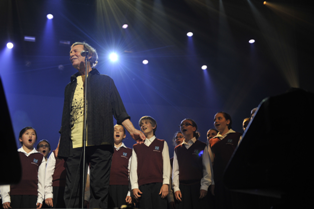 Jean-Pierre Ferland was the most important of the established Québec acts (pictured right, photo by Victor Diaz Lamich). His album Jaune is barely heard of beyond Francophone Canada, yet it set the sonic template for Serge Gainsbourg's L'Histoire de Melody Nelson. Beck is aware of this and for IRM, the album he produced for Serge’s daughter Charlotte, he had her cover Jaune's "Le Chat de Café des Artistes". Locally though, the importance of Jaune was in fusing an American rock dynamic with chanson – a deeply political move at a time when Québec had social and political issues with its place in the rest of Canada. Jaune was performed with a full orchestra, rock band and backing singers. It moved the audience. Ferland looked bemused by the response. “Le Chat des Café des Artistes” was delivered with a children’s' choir. One of the album’s key cuts, the sardonic “God is and American” swung, but still had a political charge.
Jean-Pierre Ferland was the most important of the established Québec acts (pictured right, photo by Victor Diaz Lamich). His album Jaune is barely heard of beyond Francophone Canada, yet it set the sonic template for Serge Gainsbourg's L'Histoire de Melody Nelson. Beck is aware of this and for IRM, the album he produced for Serge’s daughter Charlotte, he had her cover Jaune's "Le Chat de Café des Artistes". Locally though, the importance of Jaune was in fusing an American rock dynamic with chanson – a deeply political move at a time when Québec had social and political issues with its place in the rest of Canada. Jaune was performed with a full orchestra, rock band and backing singers. It moved the audience. Ferland looked bemused by the response. “Le Chat des Café des Artistes” was delivered with a children’s' choir. One of the album’s key cuts, the sardonic “God is and American” swung, but still had a political charge.
 Nothing else at FrancoFolies could match this for emotional impact, but audiences elsewhere were supportive of the French visitors. At Métropolis, there was warmth for Catherine Ringer as she took the stage (pictured left, photo by Frédérique Ménard-Aubin). Now alone, without her passed-away Les Rita Mitsouko partner Fred, she worked hard – too hard – but her Eighties-style quirkiness went down a treat.
Nothing else at FrancoFolies could match this for emotional impact, but audiences elsewhere were supportive of the French visitors. At Métropolis, there was warmth for Catherine Ringer as she took the stage (pictured left, photo by Frédérique Ménard-Aubin). Now alone, without her passed-away Les Rita Mitsouko partner Fred, she worked hard – too hard – but her Eighties-style quirkiness went down a treat.
The arrival of Jeanne Moreau on stage at Salle Wilfrid-Pelletier was greeted with a standing ovation. A definitive grande dame, she just needed to stand there as her presence was so strong. Accompanied by Etienne Daho she was here to recite his setting of Jean Genet’s Le condamné à mort, his prison-written poem celebrating the life of a condemned murderer reflecting on his journey through sex and the underworld. It's not an original idea to set this to music, as the singer-songwriter Hélène Martin had done so in the Sixties – but this was mesmerising show. Even so, members of the audience left on hearing the explicit words. (See video below for an extract.)
Le condamné à mort was an overt homage to the French lyrical tradition, a tradition that survives in two fabulous current artists seen at FrancoFolies. Bertrand Belin's densely wordy, narrative-infused recent album Hypernuit is great and he didn't disappoint live. Stretching the album’s songs out, he improvised on guitar with his band evoking the interplay between Television’s Richard Lloyd and Tom Verlaine. His playing and melodic arc also drew on country. This overhaul of chanson was as entrancing as the Moreau/Daho show. Almost as impactful was Alex Beaupain, another French singer-songwriter who draws on the chanson tradition to imbue it with a modern feel. Both Belin and Beaupain point the immediate future of French music. Whether they will influence Québec is difficult to tell. The context is different here.
Alex Beaupain performs live at Francofolies de Montréal 2011
It’s easy to kid yourself that Montréal is in France. It’s not. The proximity and inevitable influence of the US, which caused Jean-Pierre Ferland to write “God is an American”, is one reminder that this is nowhere near France. So, Lord help us, is poutine. Laurent Saulnier’s point about fighting to keep the French language alive in North America means that Québec’s culture, its attitude, is not that of France. Different paths have been taken, setting this region apart. Just as the States is not Britain despite the shared language, Québec is not France despite another shared language. FrancoFolies celebrates a Francophone culture, one that constantly has to define itself.
Jeanne Moreau and Etienne Daho perform Jean Genet’s Le condamné à mort live at Francofolies de Montréal 2011



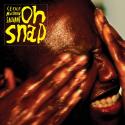

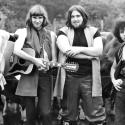

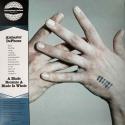
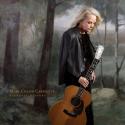




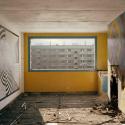

Add comment